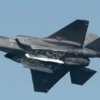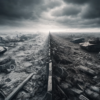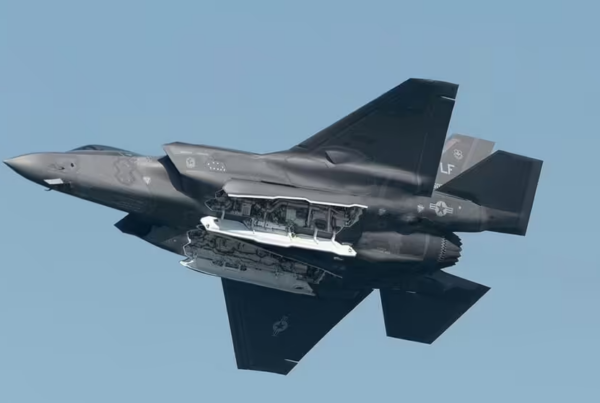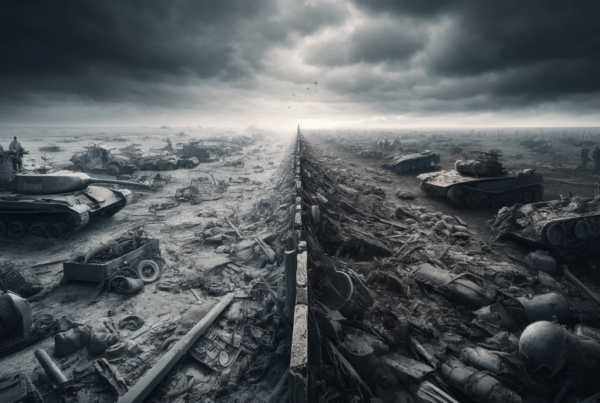There is an ancient belief cited in James George Frazer’s The Golden Bough that making a human sacrifice in laying the foundations of important buildings would give them strength and durability. Sometimes it was assumed that blood made mortar stronger and bone conferred stability.
The Canada that we know certainly had enough sacrifice taken during the laying of its foundations. Modern Canada only ceased to believe that it was little more than a British colony as a result of the First World War; our sense of national pride was especially kindled by the Canadian victory at Vimy Ridge in April 1917.
It might be said that the blood and bone of over 59,500 Canadians was laid into our foundations between 1914 and 1919. Some of that blood comes from my great uncle.
George Conn was born in Scotland and came over with his immigrating parents in 1910; settling in Brockville on the Ontario shore of the St. Laurence. When he enlisted in August 1914, he probably still thought of himself as a Briton. If he had lasted until the Canadian victory at Vimy Ridge in April 1917, it is very likely that he would then have then been thinking of himself as a Canuck, first and foremost. However, he was killed in action two years earlier, on April 22nd, 1915.
When Canadians think of the First World War, their thoughts tend to centre on Vimy Ridge, which was an impressive victory that marked the coming supremacy of the Canadian Corps as the elite formation in the Allied forces on the Western Front. Canadians have good reason to commemorate that accomplishment, as it was one of the signal events that marked Canada’s maturation into a self-confident nation. Yet it was a losing fight on another ridge that marked the debut of Canadian troops in the war, and which first drew attention from their allies and enemies to their future potential.
The volunteers who flocked to join the enthusiastic (though quite clumsy) formation of Canada’s expeditionary force around Valcartier in August 1914 had little idea of what lay ahead of them. Armed with the inadequate Ross Rifle (a pet-project of the buffoonish Sir Sam Hughes, then Minister of Defence), they chaffed to get ‘over there’ to ‘do their bit’. As battalions formed and reformed, with almost daily changes in command — again thanks to Sir Sam’s erratic micromanagement — somehow or other, a young Scottish quarryman ended up in the 13th Battalion as a private soldier. He was still with them eight months later when the Second Battle of Ypres began.
The 13th Battalion was largely based on the Royal Highlanders of Canada, a Montreal militia regiment officered by young McGill students and the social elite of the city. They were brash, eager, and quite under-trained by the later high professional standards of the Canadian Corps. However, when the German Army unleashed its big spring offensive designed to cut the Allied line in two and drive towards the vital Channel ports, the Highlanders were a part of the 3rd Brigade, 1st Canadian Division who were in their way. The division was in the front line for the first time.
Actually, the 1st Canadian Division wasn’t alone in the German’s path. Some of that honor belonged to French-African troops, most of whom fled or died when the Germans began their offensive on April 22nd, 1915 with the first effective poison gas attack in military history. This left a large gap on the flank of the Canadian division, and the left-hand battalion – the 13th – was left exposed. The Highlanders, advised by a Canadian chemist in their ranks, improvised the first crude gas masks by urinating on handkerchiefs and tying them over their faces. Then they stretched out to cover both their old position and part of the new gap in the line. As the gas cloud drifted away, the Germans launched a torrent of shells and attacked.
The expedient gas masks often didn’t work. My family doesn’t know exactly when George died, only that it was reported to have occurred on the 22nd. Maybe he was among the Canadians who drowned as their chlorine gas-seared lungs filled up with their own bodily fluids out in a newly occupied trench.
What then happened to the now severely overstretched 13th was that they spent that afternoon and evening being the anvil to the German hammer. The Ross Rifle certainly let its faults be known to the Canadians at Ypres, and the 13th Battalion were the first to realize them. The Ross was very accurate, but jammed very quickly when fired rapidly – the usual circumstance in combat. The survivors of Second Ypres were quick to later discard their Ross Rifles for the much more reliable British Lee Enfields. Nevertheless, a lot of Canadians died during German assaults while frantically hammering at the bolts of their jammed rifles as the Germans stormed their trenches. Maybe my great uncle George Conn went this way, clawing at the bolt of his useless rifle as the Germans bayonets drew near.
Out massed, gassed, stretched thin and with faulty rifles, it was a wonder that the Royal Highlanders lasted as long as they did, but eventually the Germans worked through their lines, and the rest of the 13th had to fight their way out on the morning of the 23rd – along with the survivors of other Canadian battalions stuffed into the near empty line that night. A lot didn’t make it. Canada’s first Victoria Cross of the war was won — posthumously — by one of the 13th Battalion’s young NCOs. Lance Corporal Fred Fisher, a McGill University student nine months earlier, was only 18 when he fought to the death with his Colt machine-gun to give other Canadians a chance to win safety. Maybe this was also how my great uncle died, but he was already reported as dead when the line broke.
What we do know from the history of the War is that the whole of the First Canadian Division put up a very stiff fight during their debut in battle, and blunted the German’s initial drive. It was a costly debut, in five days, over 6,000 of its members were killed and wounded (though no other battalions paid as high a price as the Royal Highlanders did for their baptism of fire). The rest of the battle, like so many in the First World War, didn’t go well for either side; but the Canadians were pegged down by both the British and the Germans as troops to watch. The Canadians were relieved on the 27th.
There are two other legacies of that day, one for the nation, and one for my Mother’s family. One Canadian physician, a doctor who was teaching at McGill when the war began, was keenly aware of what was happening to his friends, neighbors and students. Major Dr. John McCrae was running a forward dressing station through most of the battle (even after the Canadian troops had been pulled from the front line), giving the first treatment that a lot of the wounded received. For many of them, nothing more could be done and they went under row on row of crosses in a field of poppies near McCrae’s station. It seems unlikely but perhaps George Conn died here, and his was one of the temporary graves that inspired part of the vivid imagery for McCrae’s poem ‘In Flanders’ Fields‘.
McCrae, then a lieutenant colonel, later became a victim of the war himself. He died in 1918 from an illness brought on by exhaustion after three more years of exertion in tending to the wounded.
We do know that my Grandfather John Conn, who was George’s younger brother, volunteered three times to get into the war after April 1915. As he was only born in 1900, it took some creative economies with the truth and apparently a sympathetic recruiting sergeant before he was enrolled in November 1916. He did get to France, but only as a member of a Forestry Battalion. Quite possibly other sympathetic NCOs didn’t call him out on his age, but they didn’t let him transfer to the infantry either. However, he did live the war out, surviving as a farmer and mine foreman until 1967. He had three daughters and saw the birth of 12 grandchildren – from whom would later come an additional 22 great grandchildren (so far) and the first of the fifth generation who are all a part of his legacy to Canada.
As an extended family full of artists and engineers, machinists and entrepreneurs, we are adding our own stories to our country, but we know something of the price that was paid to build it. Blood and bone of our own is mixed into Canada’s foundations.








